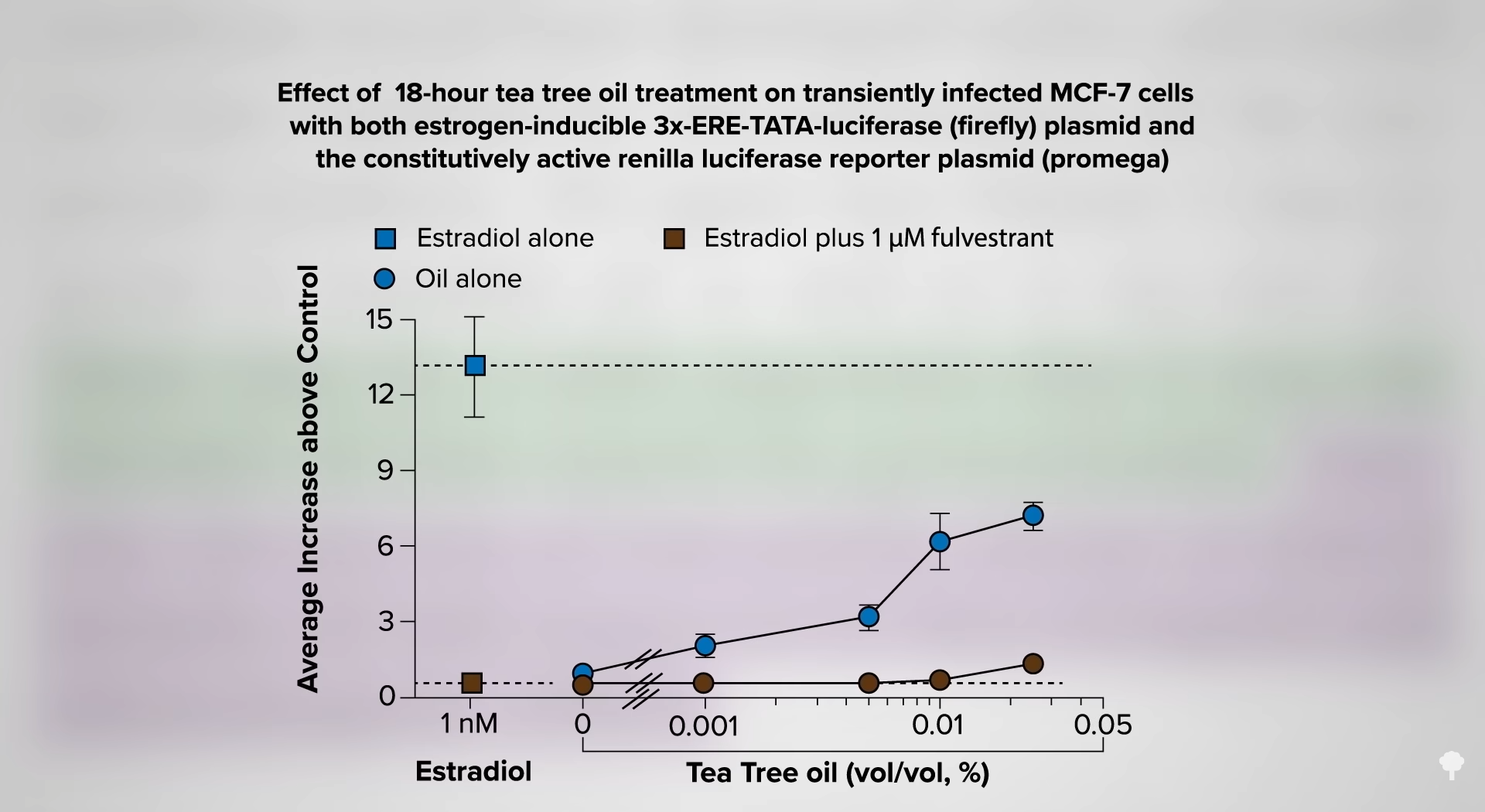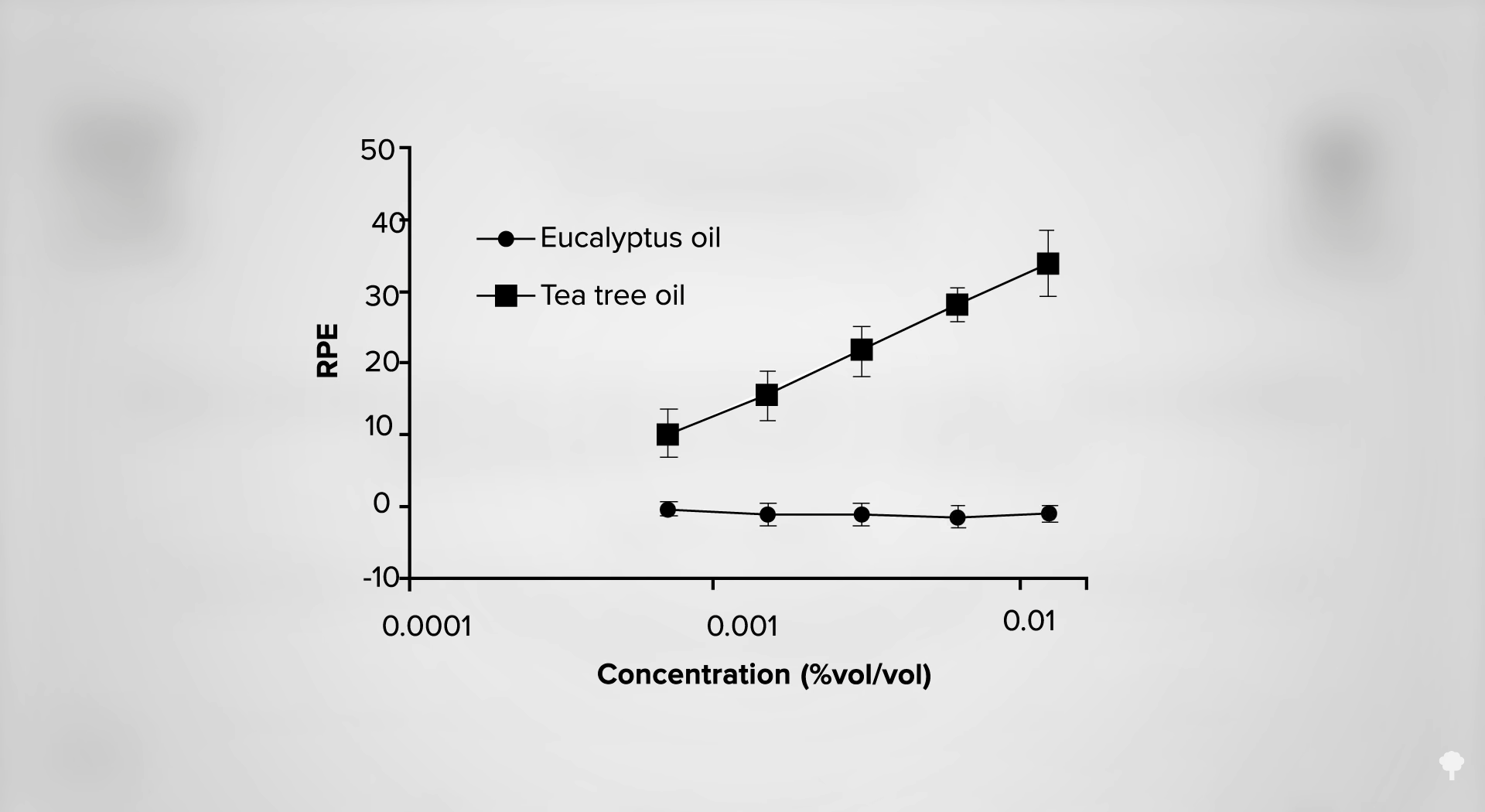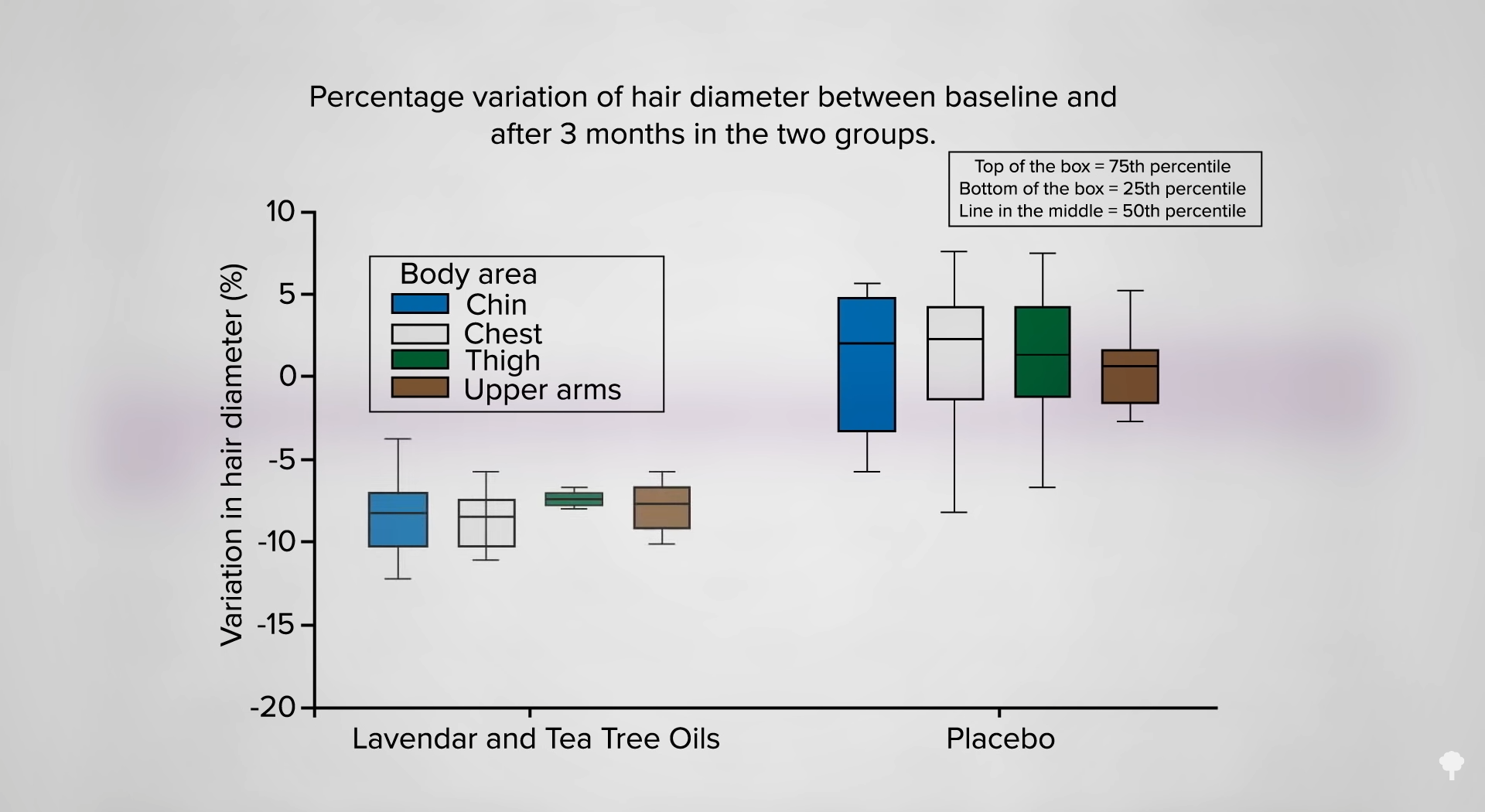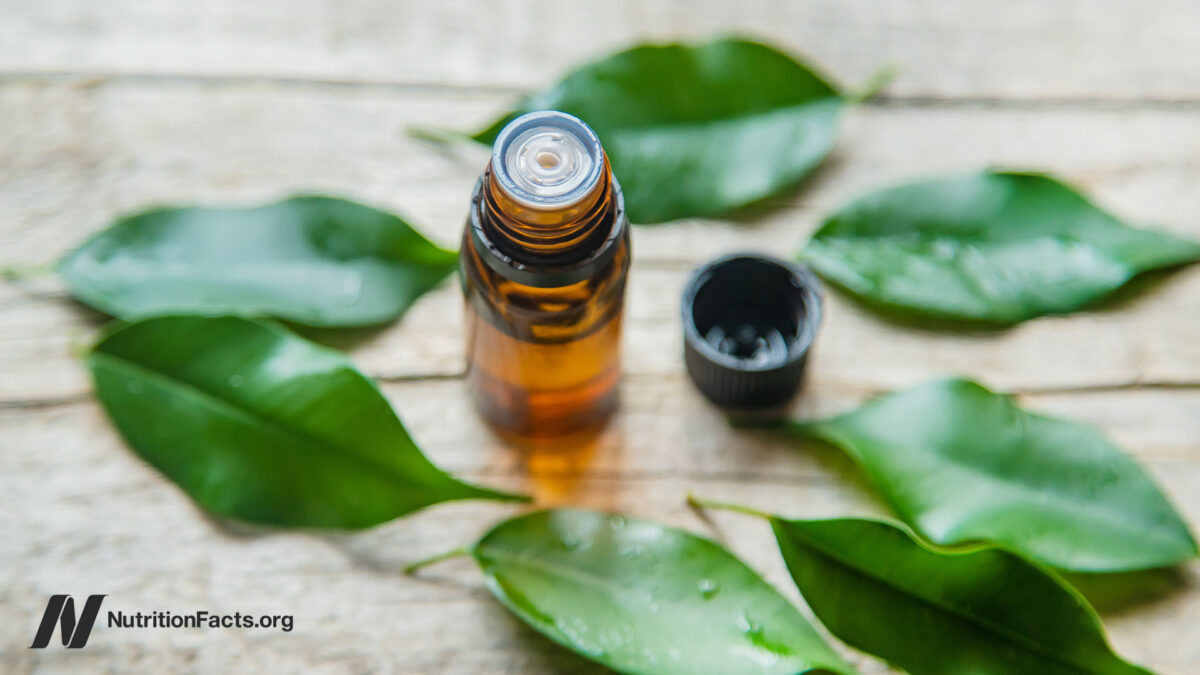Do the estrogenic effects of tea tree oil get absorbed through the skin?
Concern has been raised about a “possible link between gynecomastia, topical lavender, and tea tree oil.” As I discuss in my video Does Tea Tree Oil Have Hormonal Side Effects?, gynecomastia is the abnormal development of breast tissue. (You can see a photo at 0:14 in my video.) You may recall that I’ve talked about lavender before, but what about tea tree oil?
It all started with a case series published in The New England Journal of Medicine. The researchers described three young boys in whom breast growth “coincided with the topical application of products that contained lavender and tea tree oils.” How do we know the products were to blame? “Gynecomastia resolved in each patient shortly after the use of products containing these oils was discontinued. Furthermore, studies in human cell lines indicated that the two oils had estrogenic and antiandrogenic activities,” that is, pro-female and anti-male hormone activities. The researchers concluded that “repeated topical exposure to lavender and tea tree oils probably caused prepubertal gynecomastia in these boys.”
A tea tree oil company representative pointed out that “only one of three boys (Patient 2) was exposed to any amount of tea tree oil,” while all three subjects were exposed to lavender oil. So, lavender oil may have been to blame in all three cases. How did the researchers respond? “There may be a valid argument that it was the lavender oil that caused the gynecomastia. However, the tea tree oil had activity similar to that of lavender oil with respect to the in vitro estrogenic and antiandrogenic effects.”
Let me walk you through that. As you can see below in the graph and at 1:24 in my video, if you drip a tiny amount of estrogen on human breast cancer cells in a petri dish, you can spike their growth more than twelve-fold. If you add an estrogen blocker along with the estrogen, though, it abolishes the effect. But, adding increasing amounts of tea tree oil to the breast cancer cells causes their growth to increase. The reason we know it’s an estrogenic effect is because the growth decreases when you add the estrogen blocker. This appears to be pretty convincing, but herbal proponents argue that “in vitro testing alone is not adequate grounds for indicting traditionally used products and may raise public fear.”

The Tea Tree Oil Industry Association specifically argued “that only 3 of more than 100 compounds” of pure tea tree actually make it through the skin, so the researchers should have just measured the hormonal effects of those three compounds—which they did later that year.
As you can see in the graph and at 2:25 in my video, dripping increasing concentrations of whole tea tree oil on breast cancer cells in a petri dish can increase their growth when compared to an oil with no estrogenic effect, like eucalyptus oil. However, if you only look at the three components of tea tree oil that actually make it into your bloodstream when you apply them on your skin, none appears to have any estrogenic effects. None of the components that penetrate the skin appears to act as an estrogen, “neither alone nor in combination,” so you can’t extrapolate the petri dish effects of the whole oil to what one might see when it’s applied on the skin. What you see in the petri dish may not be identical to what you see in a person.

This new data led European consumer safety officials to conclude that “the hypothesized correction…of gynecomastia to the topical use of Tea Tree Oil is considered implausible.” In fact, if the anti-male hormone components of tea tree oil remain on the skin, why not use it to treat women who feel they are affected by hirsutism, or excessive hairiness? A study was conducted on such women who were instructed to spray themselves with a dilute lavender/tea tree oil spray versus placebo twice a day, morning and evening, on “areas affected by hirsutism” for three months. Before and after the treatment, “hairs were taken from four different body areas: chin, chest, thigh and upper arms.” After three months, no change was detected in the hair diameter of the placebo group, as expected. But, in the lavender/tea tree oil group, all the hairs ended up thinner, as you can see in the graph and at 3:46 in my video.

This showed that the combination of lavender and tea tree oils applied locally on skin could be effective in reducing mild excessive hairiness, potentially representing “a safe, economic, and practical instrument in the cure of this disease.”
For additional information beyond potential hormonal effects, see my video Is Tea Tree Oil Safe?. I continue to add new tea tree videos, so keep an eye on the topic page.
To learn more about lavender specifically, see Lavender for the Treatment of Generalized Anxiety Disorder.
